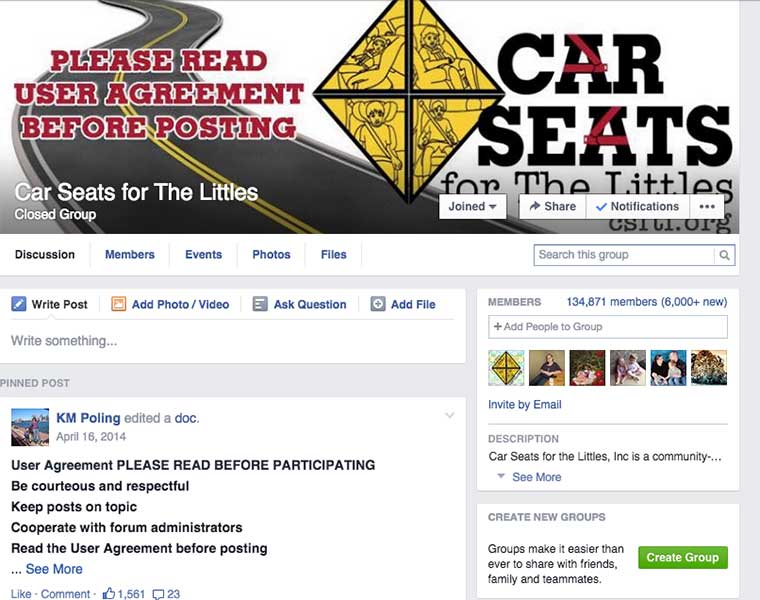Recent Articles
Popular Makes
Body Types
9 Things to Know Before Going Car Seat Shopping
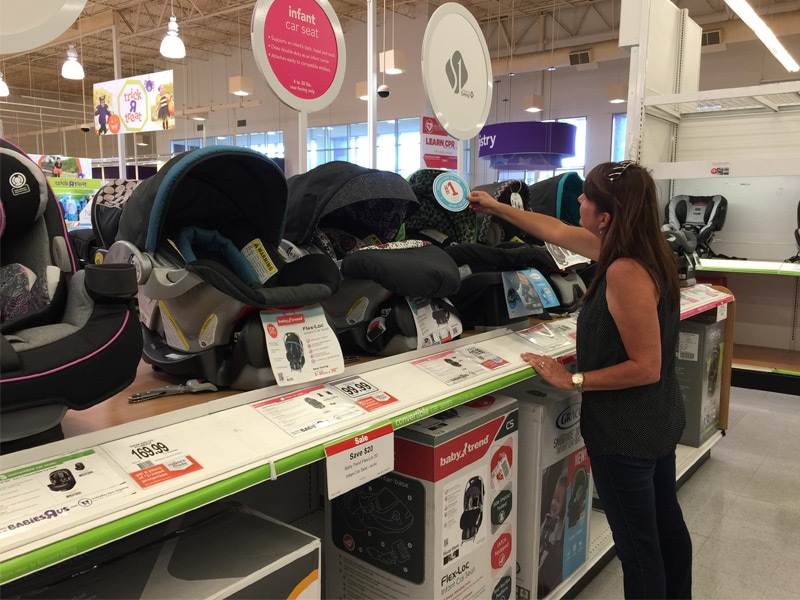
Woman_car_seat_shopping
Does your child need a new car seat? Whether you’re just casually browsing around, or need a new seat immediately, it really pays to do your research. Not only do you want the best value for your money, you need to make sure that whatever you buy will be a safe choice for your child. After all, this is no ordinary baby gear purchase—in a crash, this item could literally save your little one’s life. Here are some important things to consider before you head to the store.
What type of seat do you need?
There are four basic types of seats: infant (or rear-facing-only) seats, convertible seats, combination seats, and boosters. The type you need is based on various factors, but a main one is your child’s age.
- normally bought before baby is brought home, and will usually fit babies until around their first birthday (depending on the seat and the baby’s size).
- can be used rear-facing and then forward-facing, and can be used from birth, but is often purchased as the “next step” after the infant seat. This type is appropriate for babies who are still rear-facing (as all children should be, until they are at least two years old and preferably longer).
- also known as a harnessed booster, is suitable for children at least age 2 who are forward-facing in a five-point harness. These seats are used with the harness until the child is booster ready, and can then be converted to booster mode for older kids.
- (high-back and backless versions are available) - helps children fit in the adult seat belt properly. This style is best for children at least age 5 or 6 who are booster ready. Most children will need a booster until age 10-12.
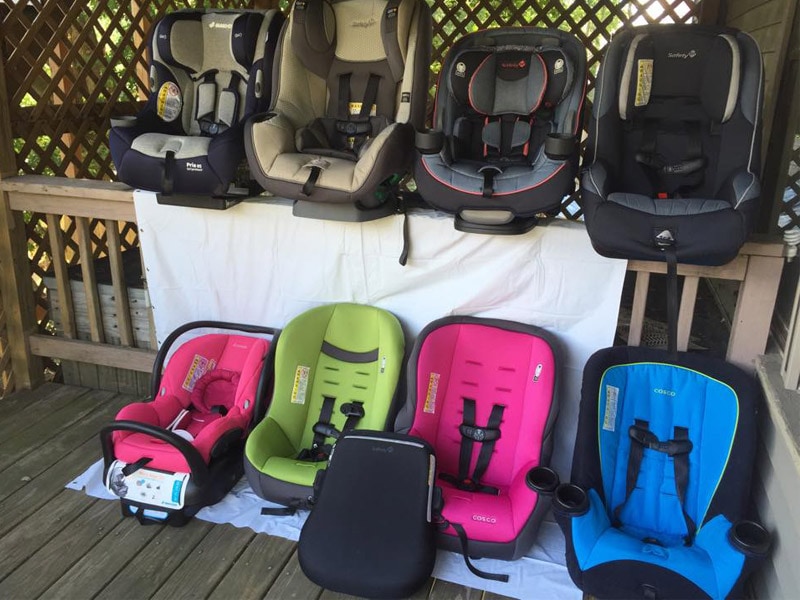
Your child's size
Before you begin shopping, make sure you get an accurate height and weight for your child if at all possible. Try to also measure their seated height (sitting against a wall, measure from floor to the top of their head) and seated shoulder height (same procedure except you measure to the top of the shoulder). All of this information will be useful when you are comparing the height and weight ranges of each seat, as well as considering things like how high or low the straps or belt guides adjust and how tall the shell is.
Ideally, you should bring your child along with you when shopping so that you can see how he or she fits in the models you’re considering, but with these measurements you can get an idea of what will work best.
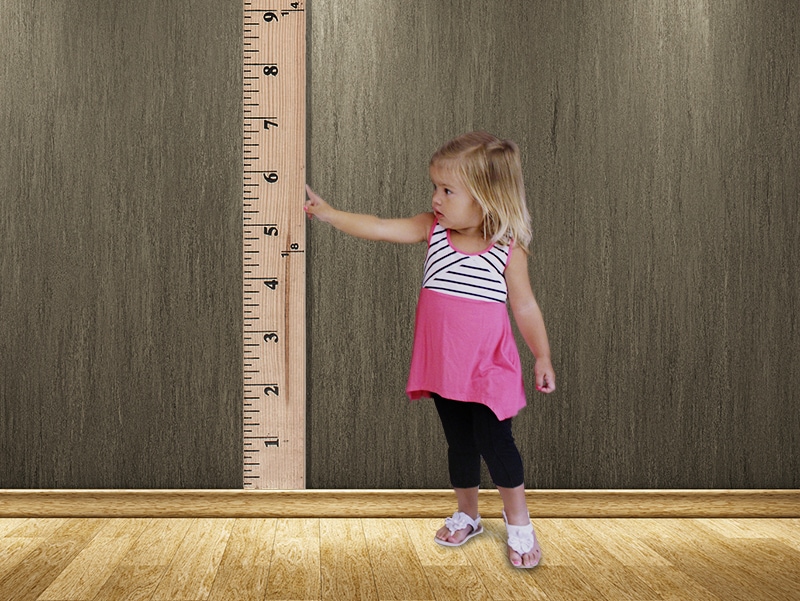
Who else needs to fit in the car?
If there will be any other passengers in the back of the vehicle, you will need to keep that in mind when car seat shopping:
- What car seats or adult passengers will need to fit back there?
- Where do you plan to have everyone sit?
- Would passing down an older child’s seat or moving some people to different seating positions be things to consider?
- Will you need to move the seats in and out of the vehicle frequently?
- Does the seat need to be easily adjustable so that children of different sizes can ride in it at different points throughout the day or week?
All of these can be big factors in which seat will be right for you. Few things are more frustrating than getting that car seat all unboxed and set up, and then discovering that it makes life really inconvenient or just plain doesn’t fit where you need it to be.
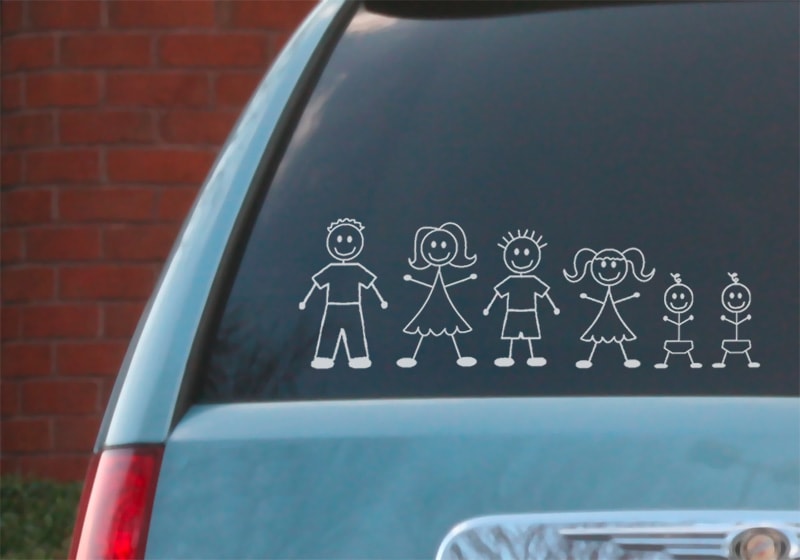
Your vehicle's limitations
Not every car seat will fit in every car. They vary greatly in size, shape, seating arrangements, seat belt geometry, and more. If you have a tiny coupe, don’t assume that that really cool, gigantic convertible seat is going to fit rear-facing in the back. That much is probably pretty obvious, but you’ll also need to consider the location of top tether anchors, which are very important for any forward-facing harnessed seat.
Another major issue is that in some vehicles, the seat belts overlap. To tell if yours do, simply buckle all of them and see if they cross over each other. This is a serious problem, because those two seat belts cannot be safely used at the same time. In fact, if the overlap is more than an inch or two, it may be impossible to securely install a car seat in each one at the same time. That is very limiting, as it essentially turns a five-seater vehicle into a four-seater. Unfortunately, this is becoming more common with each new model year.
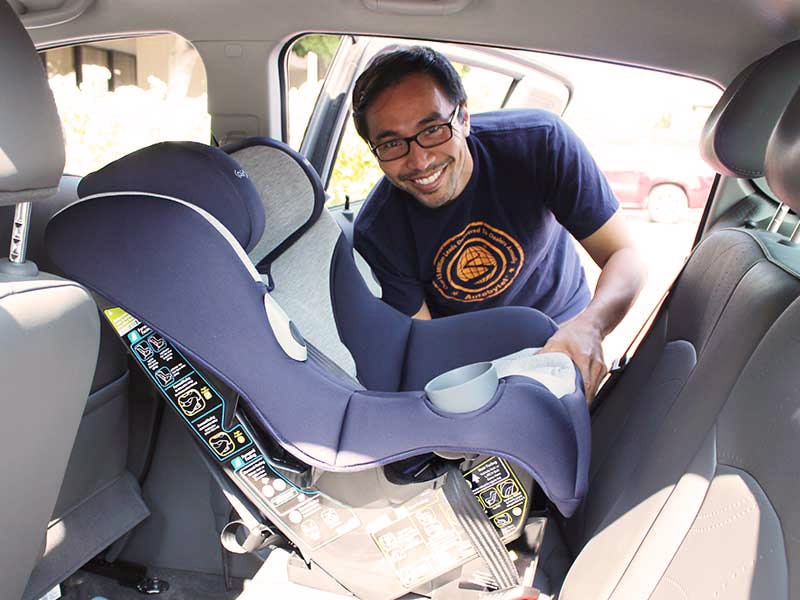
Your budget
Most people don’t have hundreds of dollars in their back pocket to throw around on a whim. You’ll want to keep in mind a comfortable price range for your purchase. From $13 backless boosters all the way up to $800 leather-upholstered convertible seats, there’s a huge range of price points available on the car seat market. For all four categories above, there are seats available for well under $100 that will be safe and suitable for almost any child. If you choose to spend more, that’s fine too.
If your family is having a tough time financially, here are some options to look into for free or reduced price car seats for those in need.
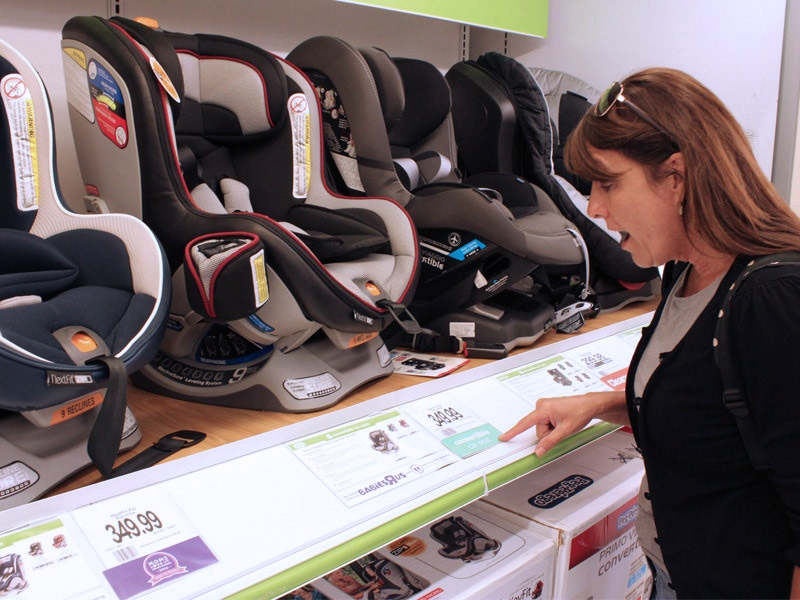
Brand isn't everything
One of the first questions some parents ask is, “Which brand of car seat is best/safest?” That’s really not how it works. There is no brand of car seat proven to be safer or better than another. All car seats pass the same strict, pass/fail testing in order to be sold. All are safe when used correctly.
Within any major brand, there are seats that are highly recommended because they will be suitable for most kids and situations, and others by the same manufacturer that really fall short in one way or another (low limits, too bulky, difficult to use, etc.) So, instead of looking at certain brands, try to find the model of seat that suits your child and your vehicle, and that you will be able to use correctly every time.
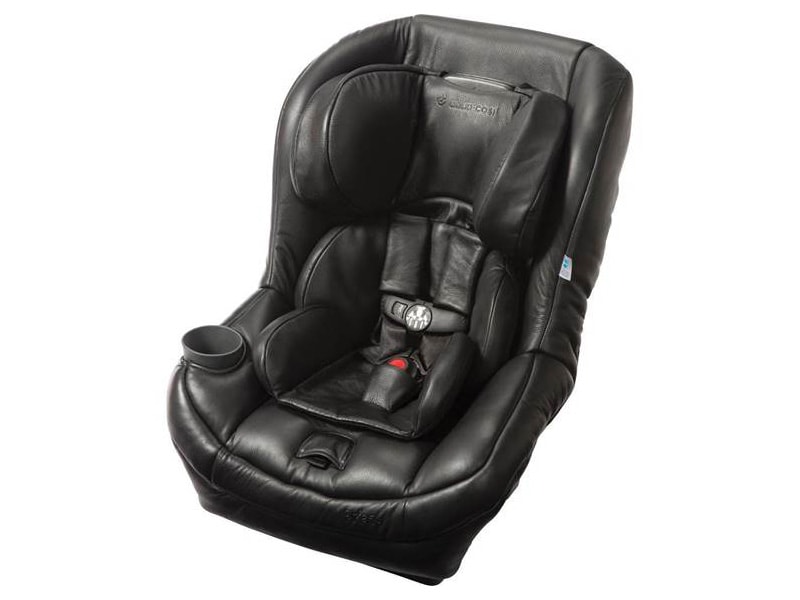
Buying in store vs. online
I highly recommend trying car seats out in person before buying, so visiting a store is going to be your best bet for that. If you bring your child along, you can see if the seat is a good fit for them and if they find it comfortable. Stores such as Babies R Us and Buy Buy Baby will usually allow you to try the floor models in your car as well. It is worth asking if smaller local baby stores will let you do this too (large chain retailers such as Walmart and Target are very unlikely to permit it).
If you shop in store, please remember that salespeople very rarely are knowledgeable about car seat safety. If they try to sell you on a certain brand or model, make sure to research it yourself before committing to it. Make sure to double check any information shown on store displays as well, such as weight limits. These details are very often incorrect. Actually, online retailer listings frequently have these types of errors, too. The seat manufacturer’s website is usually a reliable source for those specifications.
Buying online may be more convenient and budget-friendly. On the other hand, if you buy in store, you can make sure you’re getting a recent model and not something that’s been sitting on the shelf for a year, reducing its useful life. There is no safety concern with having a car seat shipped to you from an online retailer; either way, the seat is shipped from factory to warehouse, and then from the warehouse to the store or your home.
Once you decide which car seat you want to buy, you might want to shop around for the best price, as you would with any major purchase. See the last page for links to places to find the best deals on car seats.
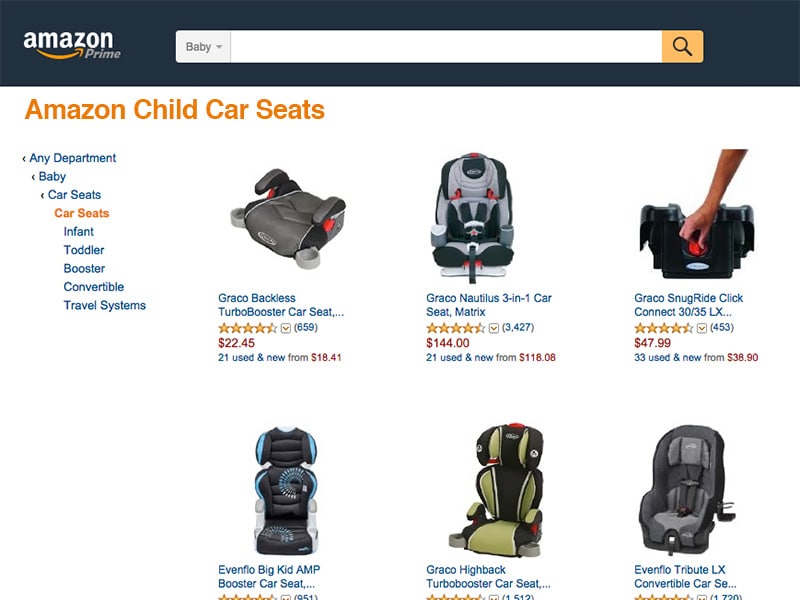
Buying new vs. used
For car seats, this is an easy choice. Buy new. There are seats available for well under $100 that will safely fit almost any car and child. When you buy a used seat, you don’t know the history of it. Some of what you would need to know:
- Was it ever in a crash? Most car seats need to be replaced after even minor crashes.
- Was it checked with luggage (including gate checking) on a plane? That can compromise the safety of the seat as well, and the damage may not be visible.
- Where did the seller get it?
- Who did they allow to use it?
- Were the straps or shell washed improperly? That can weaken the materials that are expected to hold up to hundreds of pounds of crash forces.
- What’s the date of manufacture? When does the seat expire?
- Were there any recalls on the seat?
- Do you trust that the seller is being 100% honest with you about all of the above information?
- Do you trust the seller’s memory regarding all of that information?
When you look at all the things that can be concerns when buying a used seat, it really isn’t worth it. Buy a new one. An inexpensive new seat is far safer than a used, “premium brand” seat with an unknown history.
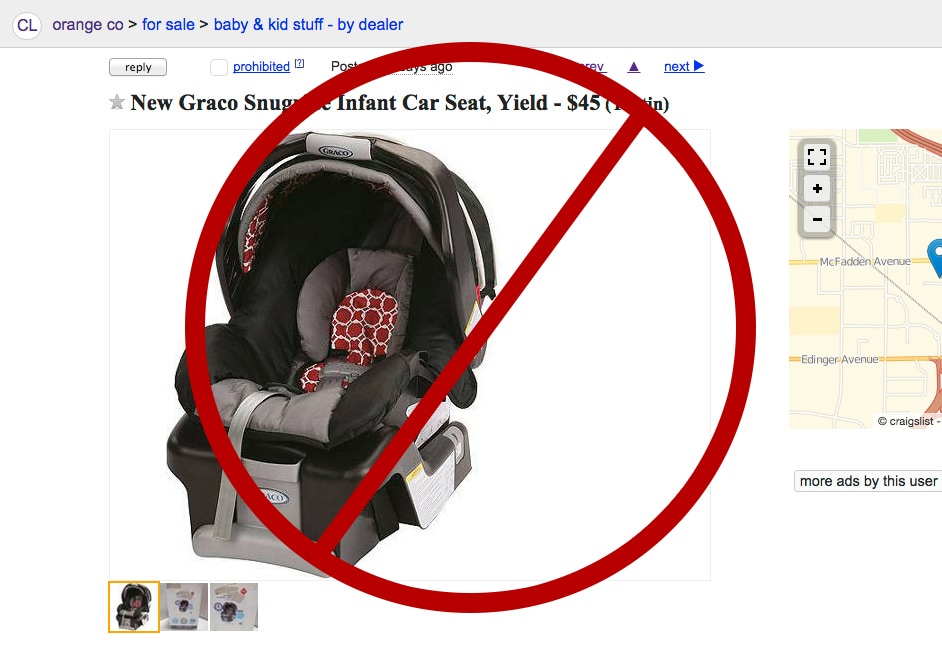
Where to research your purchase
A lot of people have certain go-to sites where they read reviews when they’re looking to make a major purchase. Whether it’s Amazon, Consumer Reports, or something else, it’s always good to know what other customers liked and disliked about a product. If you’re buying, say, a vacuum cleaner, that may be all the research you really need to do in order to make an informed purchase.
However, when you’re buying a car seat, remember, this isn’t just another piece of baby gear. This is a life-saving device that cannot do its job if it isn’t installed and used correctly every single time. It’s also something you’ll probably use multiple times a day for several years. Don’t forget, by some estimates 90% of car seats are used incorrectly! That means that 9 out 10 of the reviews you read written by other consumers are the opinions of people who probably do not know how to properly install or use the car seat they’re writing about (and yet, 96% of parents believe their seats are correct, so the vast majority of these people don’t know that they don’t know what they’re doing).
I’m not saying to ignore those Amazon reviews completely, but take them with a grain of salt. Consumer Reports reviews aren’t well-regarded by car seat experts, either, for some of the same reasons: the people reviewing the seats often aren’t using them correctly.
Any review is subjective, of course, but for car seats, it makes sense to go straight to the pros. Visit the links on the next page for expert recommendations and reviews by trained, informed Child Passenger Safety Technicians. Happy shopping!
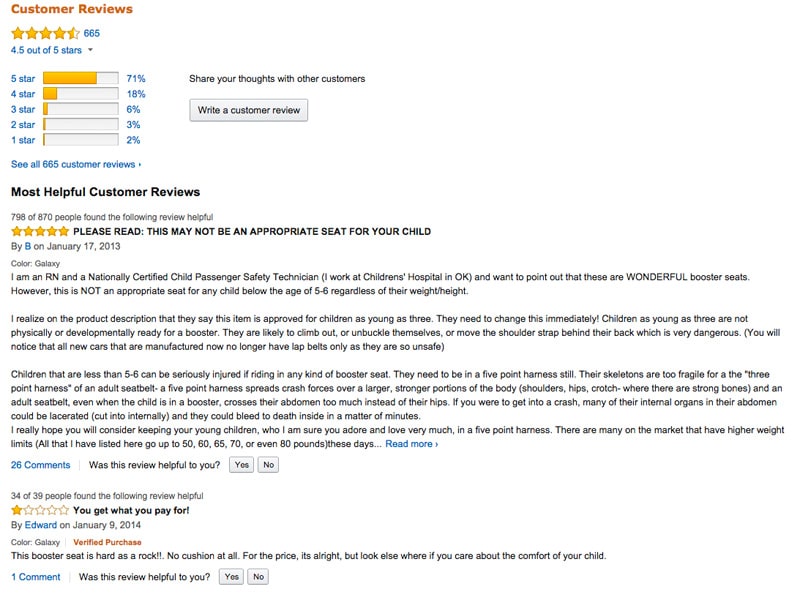
Car seat shopping advice from the experts
Reliable sources of car seat reviews and recommendations:
- Car Seats for the Littles
- The Baby Guy
- Car Seat Blog
- CSFTL Facebook group
- IIHS booster seat ratings (please note that this is for belt-positioning booster fit only; there are no “safety ratings” for child restraints—all pass the same strict pass/fail crash tests)
To track down the best deals on car seats:
